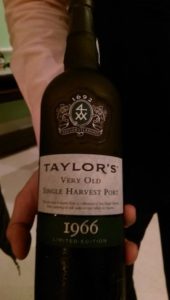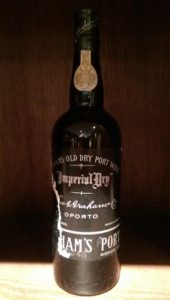
Vineyards in the area of the Douro river
Grape vines have been flourishing in the north of today’s Portugal for over two thousand years. This is demonstrated by the fact that as early as the first century BC, Greek historian Polybius in his work, “Land of Wine”, notes that one “matreta” (27 litres) of wine in this part of the Iberian Peninsula was sold for one drachma.
During the era of Julius Caesar, the Roman occupants introduced clay amphorae for ageing the wine. The wine’s quality improved and the cultivation of grape vines expanded to such an extent that Emperor Domitian ordered a halving in the area of vineyards to ensure there was a sufficient amount of other agricultural crops.
Winemaking thrived during the Visigoth domination, and it also survived the Moorish occupation between the eighth and twelfth centuries, and from 1143 when Portugal became an independent kingdom, wine was often mentioned in royal decrees. From the 13th century, boats sailed along the Douro River carrying wine to the shores of the Atlantic Ocean, and from there it was then sent as far as distant Holland.

Douro river at the Porto
So why do all port wines bear English names?
In 1386, the Treaty of Windsor was signed, establishing a political, military and commercial alliance between England and Portugal. The later Anglo-Portuguese Treaty of 1654 created new opportunities for English and Scottish traders living in Portugal and gave them special privileges and preferential duty. This meant a significant expansion in the export of ordinary Portuguese wine to England, at the expense of Bordeaux wine imports. This displeased Louis XIV’s First Minister of State, Jean-Baptiste Colbert, and as such a number of measures were taken in 1667 which began to restrict the import of English goods to France. Britain’s King Charles II responded by increasing the tax on French wine, and later banned its import entirely. English wine traders quickly found an alternative source of supply, and started importing wine from the vineyards on the steep slopes along the Douro River, robust and powerful wines which the English consumers preferred. In order for these wines to endure the long period of transit on ships, a small amount of grape spirit was added to them, increasing their strength and preventing them from going off.


The first imports of wine named “Port wine” were recorded in 1678 according to the name of the port from which they had been sent. Thus a period of large growth and prosperity began for port, as created by the English who had a penchant for brandy. The addition of neutral grape spirit, called “aguardente” in Portuguese, to the wine stops fermentation, leaving residual sugar in the wine and increasing the alcohol content.
Although the wine is harvested in the inland vineyards of the Douro valley, it got its name from the coastal city of Oporto from which it is traditionally exported. Until the 20th century, the wine was transported along the Douro River from the vineyards in special boats known as “barcos rabelos”. The wine was then transferred into “lodges”, long buildings at the port separated by narrow alleys in Vila Nova de Gaia opposite Porto’s old city centre. The wine is stored and matured here, from where it is processed and exported. Some of the most well-known and oldest Porto family producers and exporters include Taylor’s, Croft and Graham’s.
The rising popularity and demand for port, however, soon led to trade speculation, underhand practices and counterfeiting. In 1756, Portuguese Prime Minister, the Marquis of Pombal, implemented state trade control in the form of a company later known as Real Companhia or Companhia Velha, holding a monopoly on trade with England and Brazil. That same year, the port vineyard area was demarcated and 335 stone pillars were erected, which were known as marcos pombalinos. In 1757, the first comprehensive classification of port vineyards was undertaken (almost a hundred years after similar measures were implemented in Bordeaux). Those which produced the best wine, known as vinhos de feitoria, were able to sell their wine for export and demand a higher price, while those which produced wines of a more modest quality, known as vinhos de ramo, were limited to the domestic market.
Like other classic wines, port has a unique character which is linked to the climate, soils, grape varieties and winemaking traditions. The unique Douro valley terroir and its exceptional wines cannot be replicated elsewhere.
The basic classification of port wine can be defined as follows:
Ruby
Ruby port is the most widespread type. Following fermentation, it is stored in tanks of concrete or stainless steel in order to prevent oxidative ageing and preserve its bright red colour and full body. The wine is usually blended to match the style of the brand to which it is to be sold. The wine is fined and cold filtered before bottling, and in general does not further improve in the bottle.
Tawny
Tawny ports are wines made from red grapes that are aged in wooden barrels, exposing them to gradual oxidation and evaporation. This oxidation means they gradually mellow to a golden-yellow colour. Oxygen gives the wine its “nutty” flavour. Tawnies without a date marked are basic blends of wine types which have spent some time in wooden barrels. Above this are tawnies with an indication of age, representing a blend of several vintages. The official categories are 10, 20, 30 and over 40 years. These categories indicate a target age profile for the ports, and not their actual ages, although many people erroneously believe that the categories indicate the minimum average age of the blends.



Colheita
A Colheita Port is a single-vintage wine produced and aged in the tawny style, i.e. in wooden barrels, for a period of at least seven years. Instead of the age indication (10, 20, …), the actual vintage year is given. Nevertheless, Colheita Port should not be confused with Vintage Port. While Vintage Port spends only about 18 months in barrels after harvest and continues to mature in the bottle, Colheita Port can spend 20 or more years in wooden barrels before being bottled and sold.
If you want to taste a great port wine, the Graham’s brand has enjoyed the reputation of being a producer of outstanding Vintage Port for over a hundred years. Its wines are renowned for their exceptional richness, concentration and firm tannic structure: a combination which yields impressive longevity. Graham’s Vintage Ports consistently attain the highest ratings in tastings and invariably attract very high bids at fine wine auctions. In 2012, the Scottish Symington family, the brand’s owners, released 656 bottles of rare port from barrels dating to the arrival of their great-grandfather, Andrew James Symington, in Portugal in 1882. The family has named this wine “Ne Oublie” in honour of their ancestors. This outstanding wine has been bottled in individually numbered, hand produced, crystal decanters. Three silver bands, moulded and engraved by Scottish Silversmiths Hayward & Stott, bear the mark of the Edinburgh Assay Office, and you can purchase the bottles at auctions or from special merchants for 5 to 6 thousand Euros.
If you are not enthralled by the taste of port wine, however, a visit to the port of Porto and the picturesque wine regions of the Douro river basin certainly will enthral you.
Author: Ing. Arch. Iva Drebitko

